<<=Back to Top <<=Fudasho (Numbered temples)
Route:<<=Kirihataji(#10) to #11 #12 to Dainichiji(#13) =>>
Date:2020/01/31
・・・Information・・・
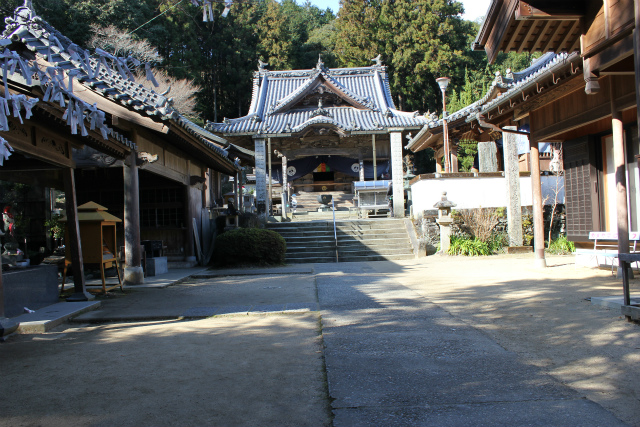

#11 Hondo 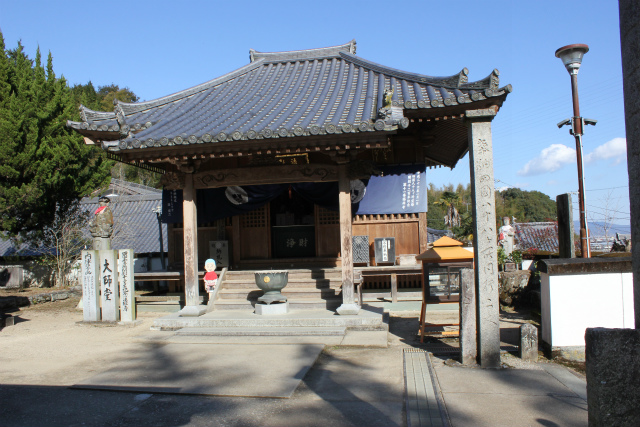
#11 Daishido
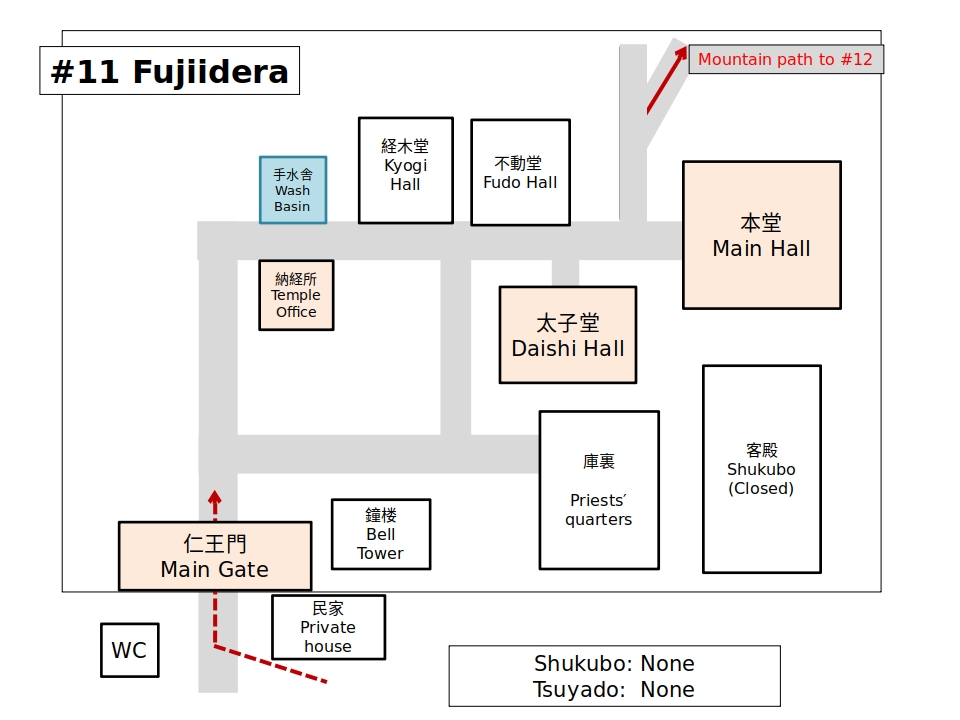
History
In 815, Kūkai founded this temple and carved the main deity. The present buildings were rebuilt in 1860. This is one of three Zen temples along the pilgrimage route. The wisteria (fuji) is in bloom during May. [Provided by Shikoku Japan 88 Route Guide]
・・・Route Information・・・
Number of Routes: Only 1 route. This is the hardest section of the pilgrimage. This route is divided into four sections.
There are three bangai (unnumbered sacred sites that are part of the pilgrimage) evenly spaced along the way.
Distance: 12.3 km
Elevation change: +600 m (1150 m climb and 550 m descent)

Start point(Fujiidera to Chodo-an)
The pilgrimage road to Shosanji starts to the left of the hondo.
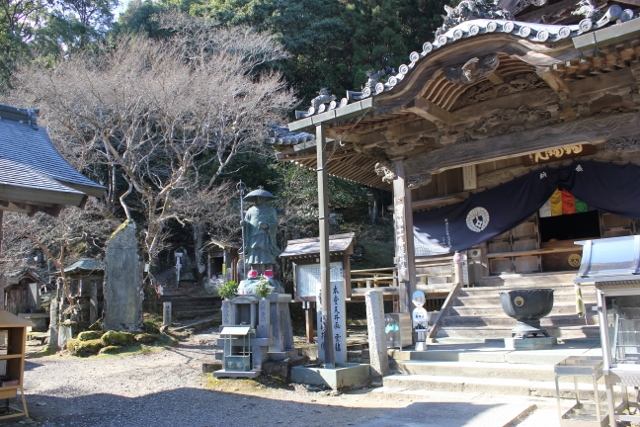
Pilgrimage road on the left. 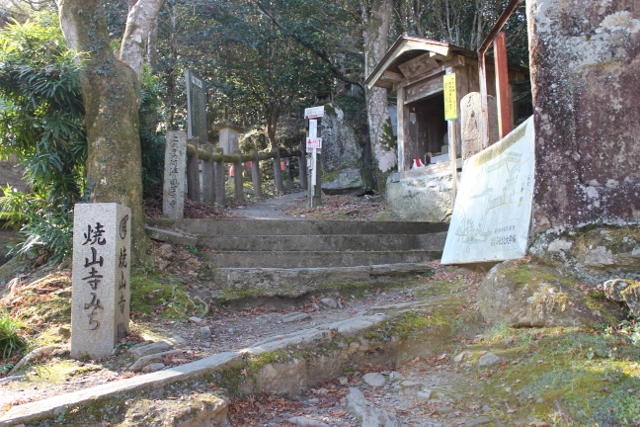
The pilgrimage road starts here
There is a variety of guideposts along the trail.
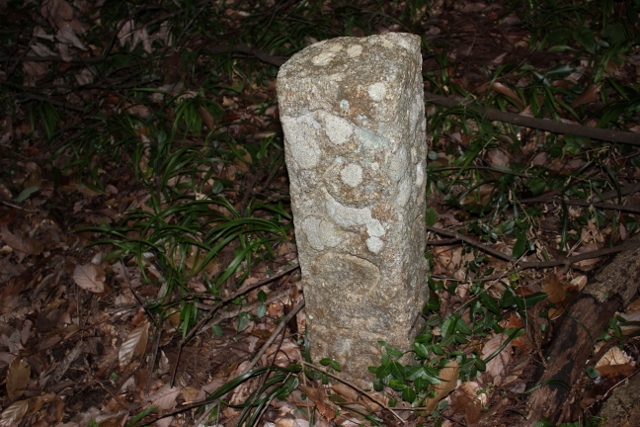
Edo period signpost 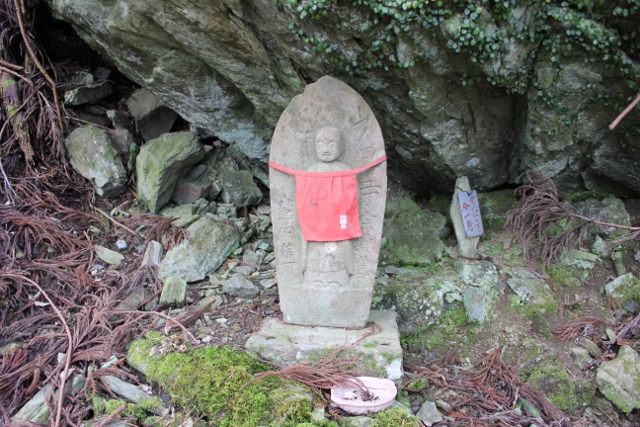
Edo period signpost 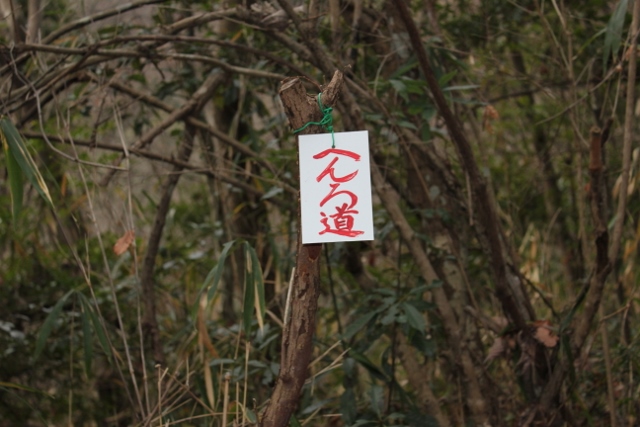
Modern signpost
First section: Fujiidera to Chodo-an
Three kilometers up the trail there is a small chapel called Chodo-an. There is a pit toilet here but no water.(elevation 440 m)
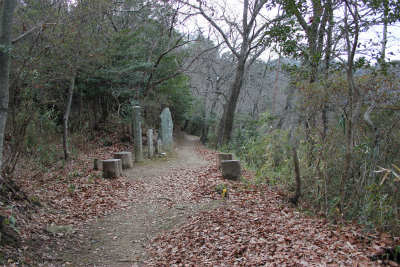
Trail to Chodo-an 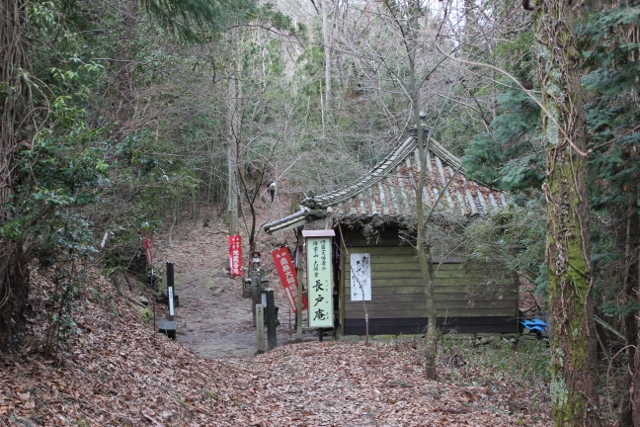
Chodo-an
Second section: Chodo-an to Ryusui-an
Three and a half kilometers farther is a temple, Ryusui-an. It’s one of the okunoin (inner sanctuaries) of Shosanji (#12). There is water and a toilet here. There is also a hut where you can rest, but no overnight stays are allowed inside the hut unless you are injured. There is no bedding available.
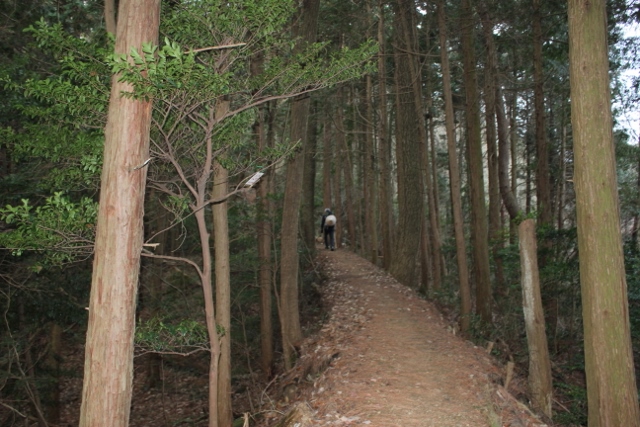
Row of giant trees 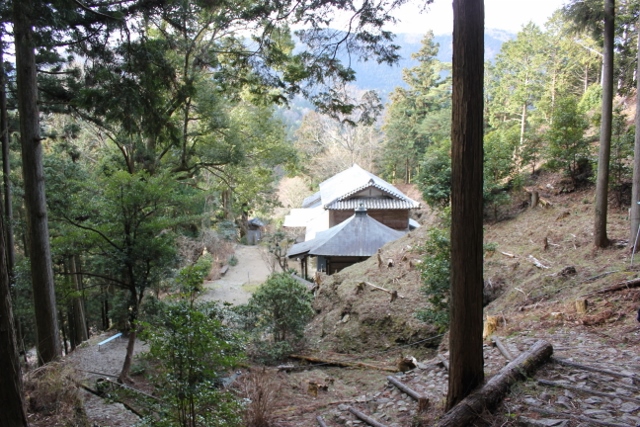
Ryusui-an
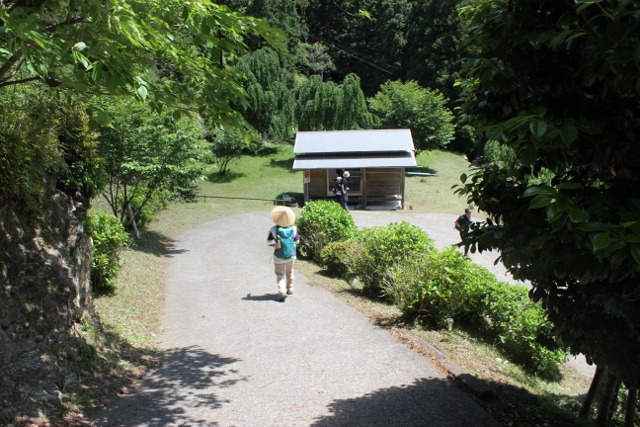
Ryusui-an hut 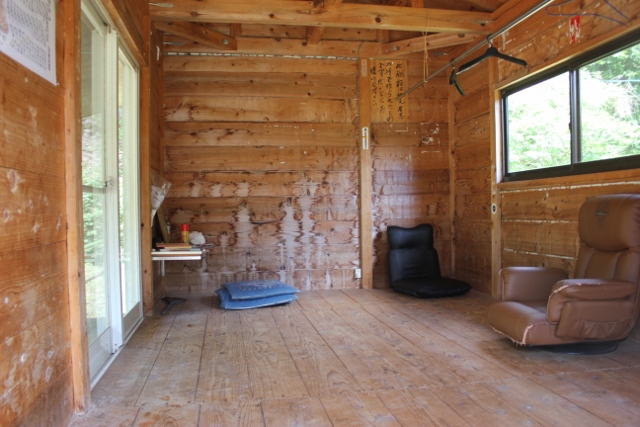
Inside Ryusui-an hut
Third section: Ryusui-an to Joren-an
A beautiful path through the forest leads to a giant bronze statue of Kobo Daishi beneath a huge tree. This is another okunoin of Shosan-ji (#12), Joren-an.(elevation 745 m).
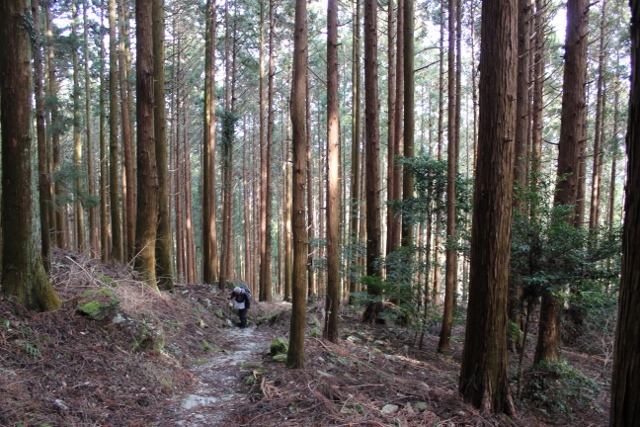
Tree-lined pilgrimage road 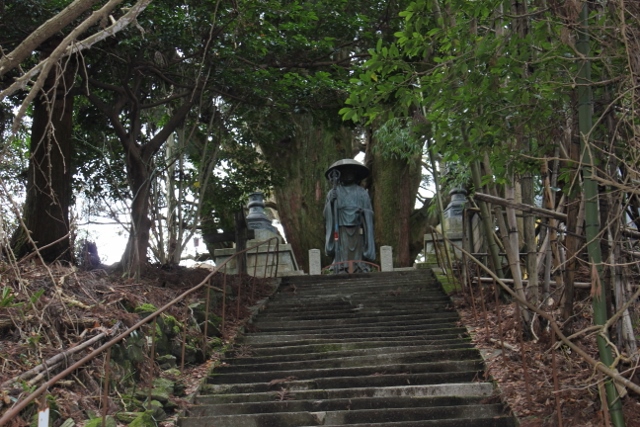
Joren-an
Fourth section: Joren-an to Shosanji
The last section of the trail goes down 370 meters and then up 300 meters to Shosan-ji (#12).
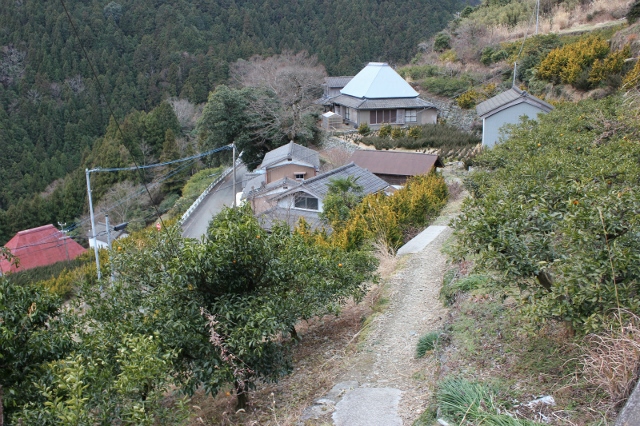
Souchi village 
Souchi village
Go down steeply through Souchi Village, cross the stream, then go up steeply to the Shosanji niomon (elevation 745 m).

Last uphill 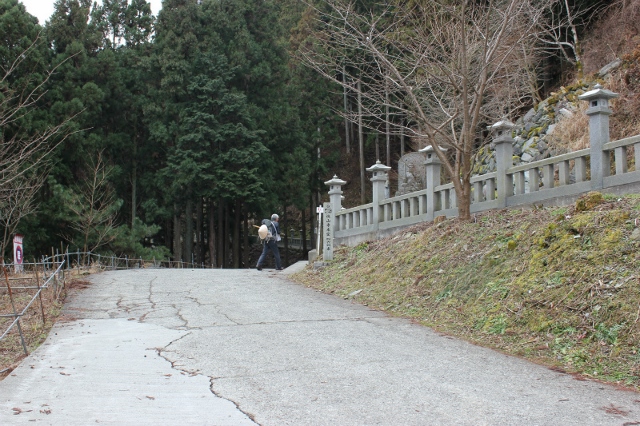
Approach from here
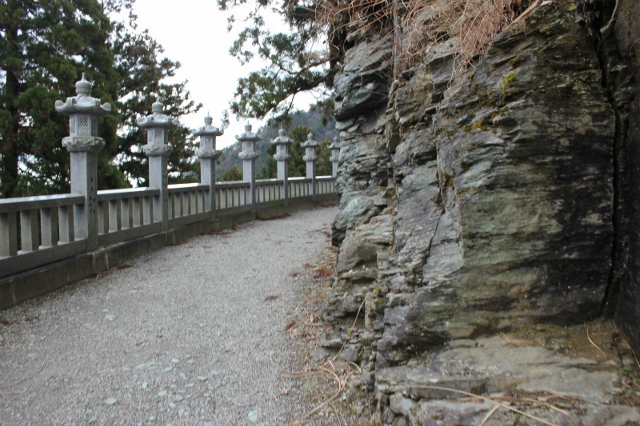
Approach to the niomon 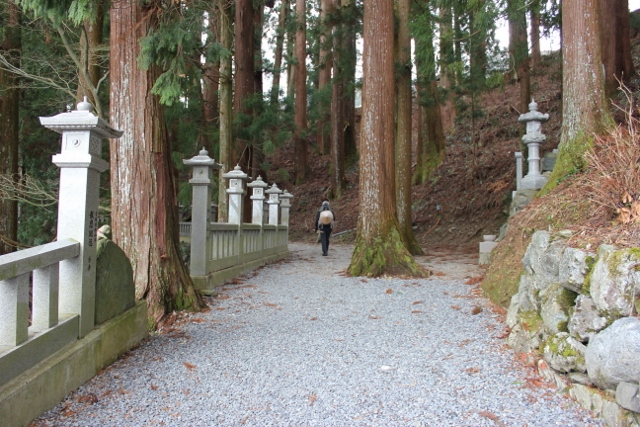
Approach to the niomon
